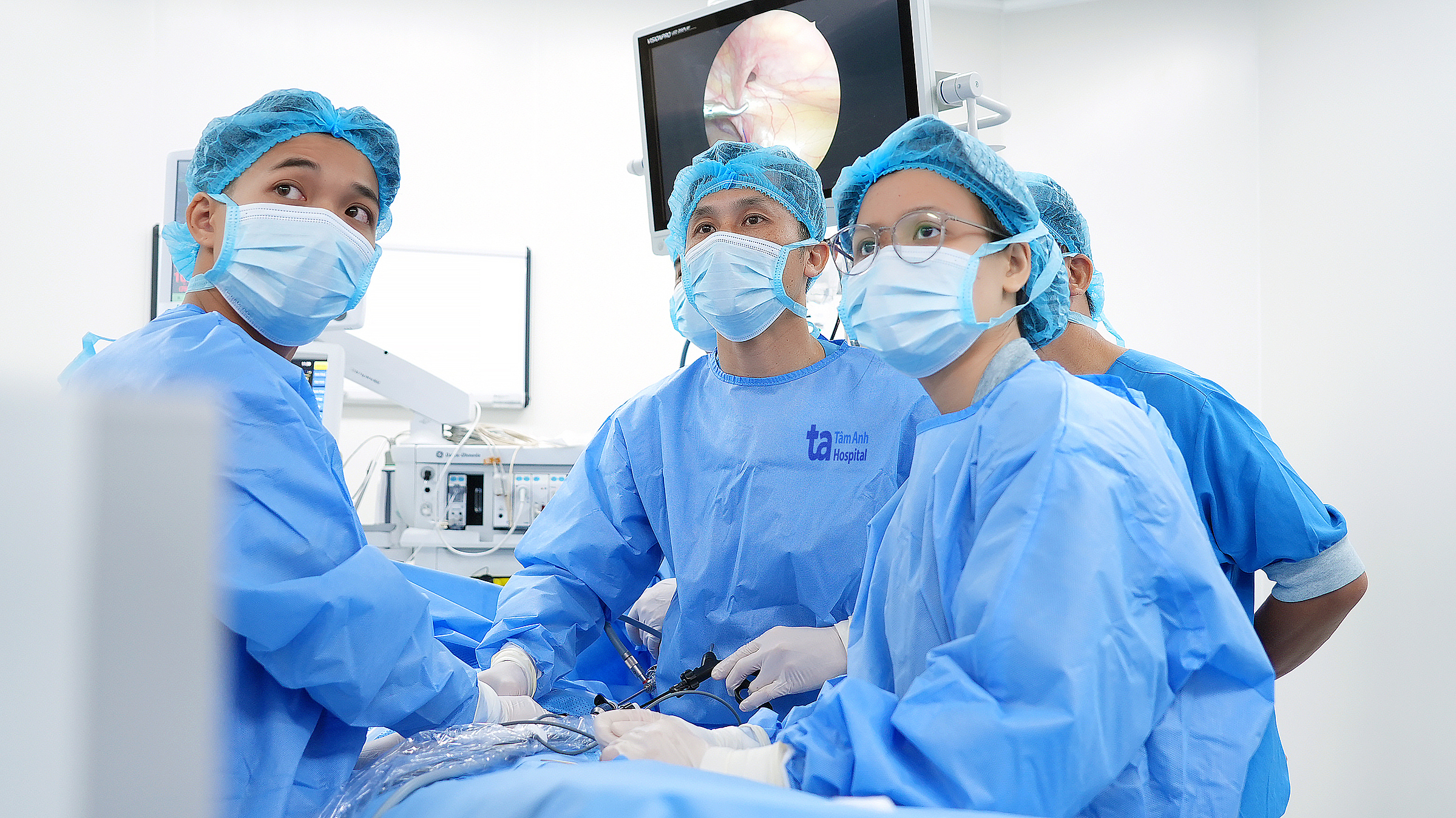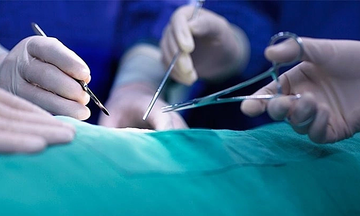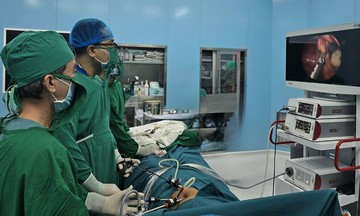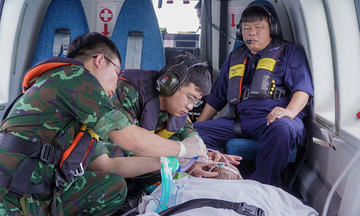An abdominal ultrasound of 4-year-old Khanh at Tam Anh General Hospital in Hanoi revealed a 25 mm deep bilateral inguinal hernia, 7-9 mm in diameter, containing omentum (a fatty membrane). Dr. Le Van Luong, from the General Surgery Department, explained that the deep, narrow hernia carried a high risk of incarceration and complications, necessitating minimally invasive surgery.
The surgical team used an epidural needle, inserted through the abdominal wall, to loop a suture around the hernia sac's neck. This suture was then tightened and knotted to close the hernia opening. According to Dr. Luong, traditional surgical needles can sometimes cause complications, such as damage to veins in the pelvic area. The curved tip of the epidural needle makes it easier to maneuver, reducing the risk of tearing the peritoneum, muscles, blood vessels, or other organs. This technique minimizes post-operative pain and the chance of recurrence.
Khanh recovered quickly, experiencing minimal post-operative pain and discomfort. The small incision healed well, and she was discharged after three days.
 |
Dr. Luong utilizes an epidural needle during a pediatric inguinal hernia repair. Photo: Tam Anh General Hospital |
Dr. Luong utilizes an epidural needle during a pediatric inguinal hernia repair. Photo: Tam Anh General Hospital
An inguinal hernia occurs when abdominal organs protrude through the inguinal canal, a weak point in the abdominal wall near the groin. It's common in men, young children, and people over 50. In some girls, the fallopian tubes or ovaries can also enter the hernia, potentially leading to incarceration, torsion, and necrosis.
Inguinal hernias in children can be difficult to detect initially. The bulge may only appear when the child is crying, coughing, straining during bowel movements, or exercising, becoming less noticeable when they are resting. Some children become fussy or irritable, but this can be easily mistaken for other issues. By this stage, part of the intestine or omentum is outside the abdominal cavity, covered only by a thin layer of skin and tissue, making it vulnerable during movement and causing pain and discomfort. Even a slight impact to the groin can cause damage or compress blood vessels in the hernia, leading to acute incarceration.
A sudden increase in abdominal pressure from coughing, crying, or straining can also trap a section of the intestine in the hernia opening. This can compress blood supply, leading to strangulation. This situation can escalate quickly and unpredictably. Without prompt surgical intervention, the trapped intestine can become necrotic, causing peritonitis and sepsis.
Dr. Luong recommends early surgery for children with inguinal hernias, even if there are no signs of incarceration. Proactive surgery before complications arise reduces the risk of bowel resection, shortens recovery time, and minimizes long-term health impacts. Parents should regularly check their child's groin area, especially after strenuous activity, crying, or straining. Any unusual bulge, even if soft and painless, warrants a consultation with a pediatrician to discuss treatment options.
Khue Lam












